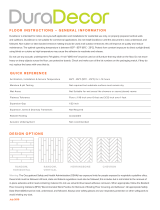
5 Detailed operation of the cutter ........................................................................................................................................................... 42
Introduction ............................................................................................................................................................................. 42
Home screen ........................................................................................................................................................................... 44
Main menu ............................................................................................................................................................................... 44
Knife pressure ......................................................................................................................................................................... 44
Knife oset .............................................................................................................................................................................. 45
FlexCut ..................................................................................................................................................................................... 45
Tool ........................................................................................................................................................................................... 46
Actions ..................................................................................................................................................................................... 46
Settings .................................................................................................................................................................................... 47
Calibrations ............................................................................................................................................................................. 49
Conguration .......................................................................................................................................................................... 49
6 Maintenance ............................................................................................................................................................................................ 52
Clean cutter surfaces ............................................................................................................................................................. 52
Clean the drive system .......................................................................................................................................................... 52
Clean the substrate sensor ................................................................................................................................................... 53
Clean the Y-guide rail ............................................................................................................................................................. 53
Replace the knife .................................................................................................................................................................... 54
Change the fuse ..................................................................................................................................................................... 57
Update the rmware .............................................................................................................................................................. 58
7 Troubleshooting ..................................................................................................................................................................................... 59
Cutting quality is not satisfactory ........................................................................................................................................ 59
Substrate is drifting and you have tracking issues ........................................................................................................... 59
Substrate jams ........................................................................................................................................................................ 60
Cutter cannot detect HP barcode or registration marks .................................................................................................. 60
8 Accessories .............................................................................................................................................................................................. 61
Order accessories ................................................................................................................................................................... 61
9 Specications .......................................................................................................................................................................................... 62
Cutter dimensions .................................................................................................................................................................. 62
Shipping dimensions ............................................................................................................................................................. 62
Substrate dimensions ........................................................................................................................................................... 62
Performance ........................................................................................................................................................................... 63
Firmware .................................................................................................................................................................................. 64
Environment ........................................................................................................................................................................... 64
Electrical .................................................................................................................................................................................. 64
Acoustic .................................................................................................................................................................................... 64
iv ENWW
























